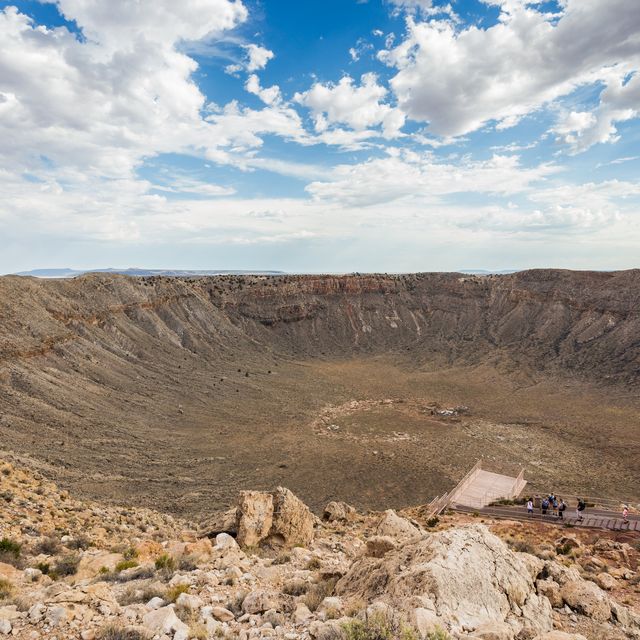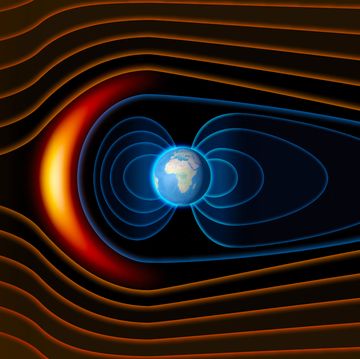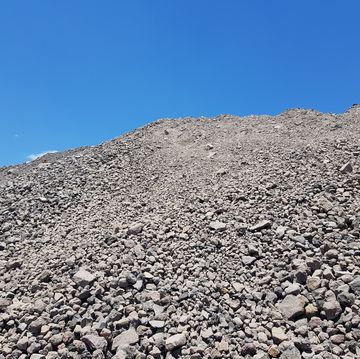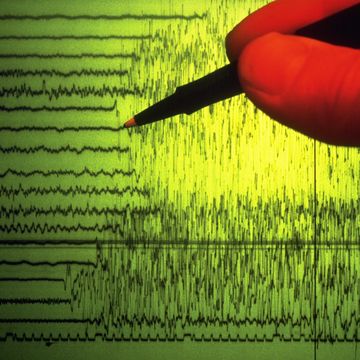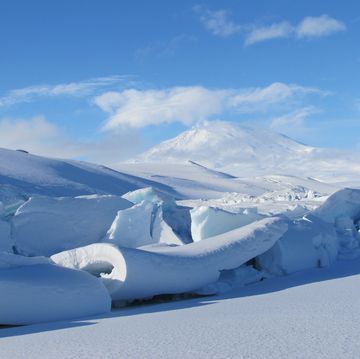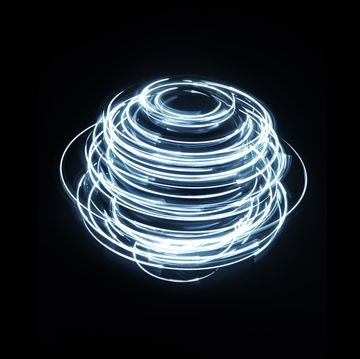- Researchers believe they’ve discovered the world’s largest asteroid impact crater in New South Wales, Australia.
- They think the impact may have happened between 445 and 443 million years ago.
- It could have been part of the reason for the Hirnantian glaciation stage, a mass extinction event that eliminated about 85 percent of Earth’s species.
The news about the discovery of the world’s largest asteroid impact crater is huge, if true—323-miles-in-diameter huge.
Researchers at University New South Wales (UNSW) believe they’ve found evidence that an asteroid impact buried near the town of Deniliquin, Australia, is the world’s largest ever discovered, and could have helped trigger a major glaciation event that killed off 85 percent of the world’s species. The research is published in the journal Tectonophysics.
Dubbed the Deniliquin structure, UNSW adjunct professor and asteroid impact researcher Andrew Glikson believes the crater is 323 miles in diameter, nearly double the size of the current record-holding crater—the Vredefortimpact structure in South Africa.
Glikson claims the impact that caused the crater may have occurred during the Late Ordovician mass extinction event. “Specifically, I think it may have triggered what’s called the Hirnantian glaciation stage, which lasted between 445.2 and 433.8 million years ago,” he wrote in a statement. “This huge glaciation and mass extinction event eliminated about 85 percent of the planet’s species.”
Gigantic asteroid impacts can have a devastating effect for life on Earth, with the sudden impact not only sending reverberating waves of devastation out, but the debris fields and subsequent atmospheric noise dims the sun’s intensity and can trigger a cooling event.
Glikson concedes that the crater may be even older, but says that whenever the asteroid hit, it hit the eastern part of the Gondwana continent—which existed for some time before it split off into several continents, including Australia.
Finding a crater of that size buried in plain view is tricky because of erosion and sediment movement. Even Earth’s shifting tectonic plates can alter the crater. Glikson says that when an asteroid strikes, it creates a crater with an uplifted core, like how a drop of water splashes upward when a pebble hits a pool.
“This central uplifted dome is a key characteristic of large impact structures,” he writes. “However, it can erode over thousands to millions of years, making the structure difficult to identify.”
By understanding the geophysical makeup of the materials thrown out of a crater during impact, scientists can study layers of “impact ejecta” in various terrains around the world. Already, Gondwana and Australia were and are home to 38 confirmed and 43 potential impact structures.
In 1995, Glikson’s colleague Tony Yeates suggested thst magnetic patterns in New South Wales likely represented a massive—yet buried—impact structure. By analyzing the region’s updated geophysical data between 2015 and 2020, Glikson wrote, he believes he “confirmed the existence” of the Deniliquin structure with a seismically defined dome at the center.
To support his claim, Glikson cites a number of indicative physical phenomena. Magnetic readings that reveal a symmetrical rippling pattern that would have been produced by the impact’s extremely high temperatures, a central low magnetic zone corresponding to deep deformation above the mantle dome (the top of the dome is shallower than the top of the regional mantle), and radial faults moving away from the believed center that are typical of large impact structures are among the indicators.
According to the study, the central uplift and associated angular rock have all been eroded. Still, the authors claim that an interpretation of the Deniliquin features are “inconsistent” with the surrounding structural trends.
“The bulk of the evidence for the Deniliquin impact is based on geophysical data obtained from the surface,” Glikson wrote. “For proof of impact, we’ll need to collect physical evidence of shock, which can only come from drilling deep into the structure.”
With no mega-drilling operation planned, we’ll have to chalk up the Deniliquin news to the giant possibility of an enormous asteroid impact crater with vast consequences. Huge, if true, indeed.
Tim Newcomb is a journalist based in the Pacific Northwest. He covers stadiums, sneakers, gear, infrastructure, and more for a variety of publications, including Popular Mechanics. His favorite interviews have included sit-downs with Roger Federer in Switzerland, Kobe Bryant in Los Angeles, and Tinker Hatfield in Portland.
